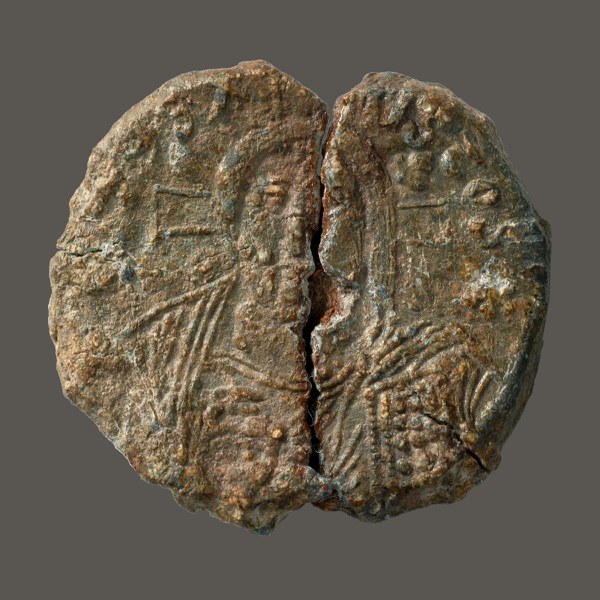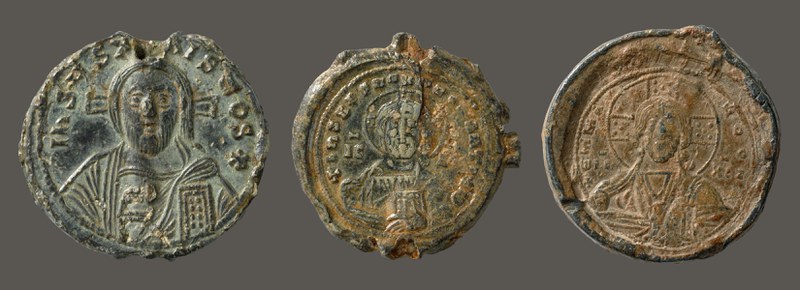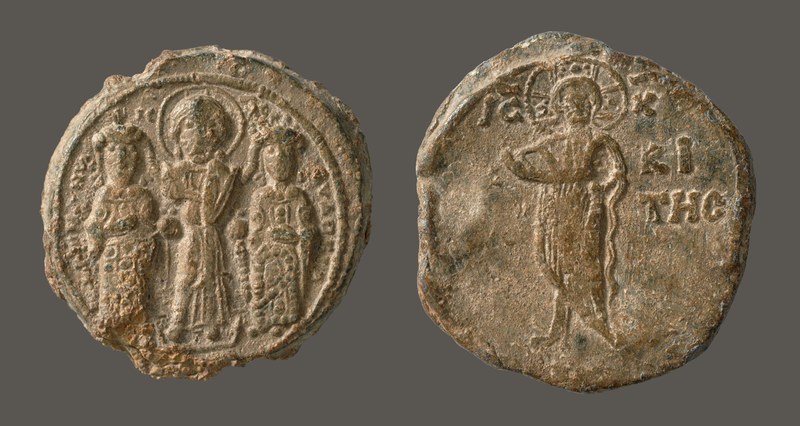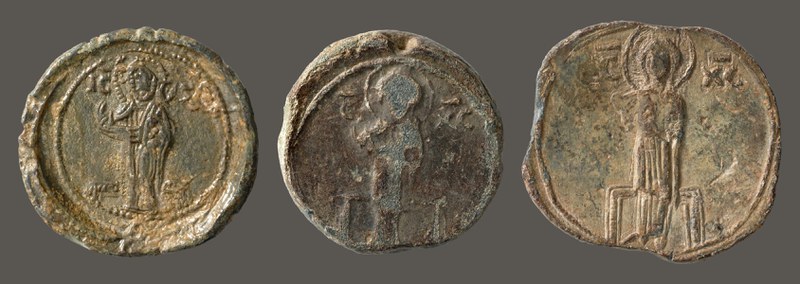
Considering the obvious parallel between the Christ (the Ruler of All) and the emperor (his earthly counterpart), it is perhaps surprising to find the son of God as a minor figure on early imperial seals. Although as a child he accompanies the Mother of God, the depiction of an adult Christ does not appear on Byzantine seals until the reign of Michael III. The image—Christ en buste, with a nimbus cruciger or a cross behind his head, a book in his left hand, and his right held in blessing—remained the standard depiction until the end of the eleventh century.


Although the image of Christ remained the same, innovations occurred in the identifying inscriptions. Originally just “Jesus Christ,” the seals of John I introduced the inscription Iesus Christus rex regnantium, “Jesus Christ, King of Kings,” which he also used on his coins. This was not retained by his successors, however, and beginning with Basil II “Jesus Christ” is replaced by the sigla IC XC, with the inscription now reading “Emmanuel.” Notably, this is not accompanied by a change in the depiction of Christ, which does not occur until the reign of Manuel I, as a pun on his name. There, Christ Emmanuel appears younger and beardless, with fleshier cheeks and shorter hair. The first two Komnenoi, Alexios I (1081–1118) and John II (1118–1143) depicted Christ seated on a high–backed throne.
A somewhat rare depiction of Christ is the full-length, standing portrait that first appears on the coins of Justinian II’s second reign. This type does not appear on seals until the reign of Romanos IV (1068–1071), where he appears crowning Romanos and Eudokia. A standing Christ does not recur until the reign of John III in the thirteenth century. This Christ is interesting because he is labelled as Khalkites, a reference to the icon placed above the main entrance to the Great Palace in Constantinople. After the Palaiologan restoration, the standing Christ is found on all of the imperial seals.







